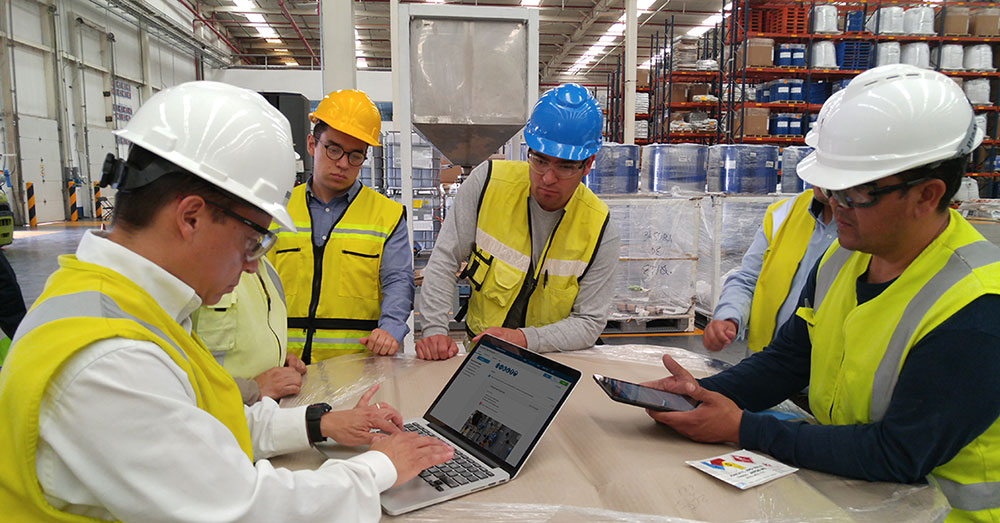By Lawrence Whittle, CEO, Parsable
I recently asked an audience of industrial executives at a future of manufacturing event if they knew who was their longest-serving employee. Unsurprisingly, many did know and several cited employees with over 40 years of service.
Yet according to Gallup data, only half of Millennials strongly agree they plan to be working at their company one year from now. That means the other half don’t, and that’s something all organizations must acknowledge.
Times are changing rapidly and the concept of job hopping will become a new norm in the industrial space.
Unfortunately, job-hopping and increased turnover poses several challenges for employers. Additional resources and time must be allocated toward recruitment, more efficient and relevant onboarding, and finding ways to motivate employees — particularly Millennials and Gen Z, which comprise a significant segment of the workforce — to stick around. According to the Gallup research I referenced earlier, Millennials want to feel engaged with their peers (only 29 percent of Millennial job seekers report being engaged), and additional Gallup research found 59 percent rate opportunities to learn and grow as extremely important.
I often ask our industrial customers what were the main reasons for investing in new technology. Frequently, I am hearing how companies are using modern digital tools to attract new employees as well as to retain and retrain. Time to competency is very important for all new hires.
While employee turnover is a reality all industries face, it’s particularly difficult for industrial companies. Work in these environments can be very complex and even dangerous, and inexperienced workers naturally expose more risk for mistakes or human error as work is being executed.
Equipment malfunctions and production shut-downs caused by inexperienced workers — even if operations cease for a short amount of time — could be worth hundreds of thousands of dollars in lost product. More importantly, work performed improperly could also lead to scenarios that threaten worker and consumer safety.
As a result, sound onboarding processes are critical for newly hired workers. But the traditional ways of onboarding — where they’re given a six-inch binder to read up on, for example — aren’t so effective for digitally native Millennials and Gen Z.
Connected worker technology can improve the onboarding experience and beyond. These solutions move standard operating procedures (SOPs) and work execution instructions off pen and paper and into digital, multimedia formats on mobile devices, so that every step in a procedure is executed correctly, the first time, every time. They also make it easier to collaborate with peers, managers and offsite experts, and, for companies, provide an opportunity to deliver future-focused, on-the-job training. This ultimately creates a more fulfilling, engaged workplace for their Millennial and Gen Z employees.

Connected worker technology allows for better collaboration across teams.
With any new job, there are plenty of steep learning curves. Connected worker technology softens these curves, helping guide new generations of recruits through their tasks and responsibilities in ways they’re most comfortable in, ensuring they execute work safely and effectively. It also can take some of the burden off managers who need to fully support new employees in their first few weeks and months on the job, and give them some peace of mind that missteps are less likely to happen.
Because these interactive job instructions are delivered on a mobile device, employees can learn as they’re performing the work on the factory floor or in the field. The majority of industrial workers are deskless, so having resources available to them, at any moment, is critical. It’s like keeping an expert in your back pocket — always available for reference or to check on work being performed.
Connected worker technology also enables experienced workers and managers to easily collaborate and communicate with new peers. This is especially important for onboarding, as new hires are most likely to have questions or need guidance about a workflow or task, especially if they’re remote or spread out in a vast plant. They not only can connect with the right people for input, but also can share photos and conduct live video conferences on a mobile device, letting others assess the situation with additional visual context.
Aside from job guidance, connected worker technology also captures production-level data and collects insights on worker productivity. This is incredibly helpful to managers, especially for coaching talent. A good example of what the data might show could be roadblocks in the production process. The data can drill down to identify how long certain processes within production take, and, from there, pin-point processes that are taking up too much time and slowing production.
Getting even more granular, managers can then determine who is running that slower process and then use that insight as an opportunity to either help that person learn how to become more efficient in their work, or to uncover what variables in the production process might be preventing that person from completing their job efficiently. Whether the data can be used as a teachable moment — something very important to new or experienced workers — or whether the data can uncover kinks in the process that is blocking productivity, it’s an essential source of information.
And if a worker or team has found ways to improve a specific procedure or workflow, these best practices can be quickly surfaced and disseminated across operations — and give management a reason to recognize the worker or team for a job well done.
By making it easier to connect frontline employees with each other and to the machines and procedures that make up their day-to-day work, technology can be a game-changer for industrial companies that need to retain a new, younger generation of workers with different workplace expectations. At the same time, the value of connected worker technology goes far beyond helping to solve the talent crisis; it also ensures the company’s overall operations are running at peak productivity, quality and safety.

Lawrence Whittle
Lawrence Whittle is the CEO of Parsable, provider of the leading Connected Worker Platform built to digitize, execute, measure and transform human industrial work at scale to improve productivity, quality and safety. A global citizen and cloud software veteran, Lawrence has led technology companies in over 10 countries in the last two decades, all focused on providing enterprise software solutions that drive transformational change for the world’s largest organizations.
Scott Ellyson, CEO of East West Manufacturing, brings decades of global manufacturing and supply chain leadership to the conversation. In this episode, he shares practical insights on scaling operations, navigating complexity, and building resilient manufacturing networks in an increasingly connected world.